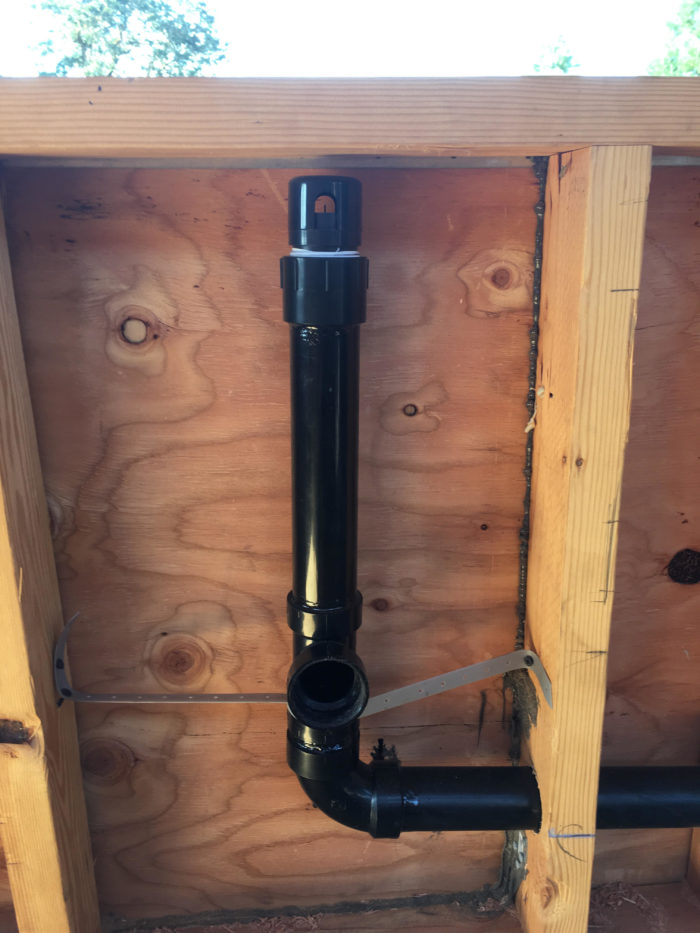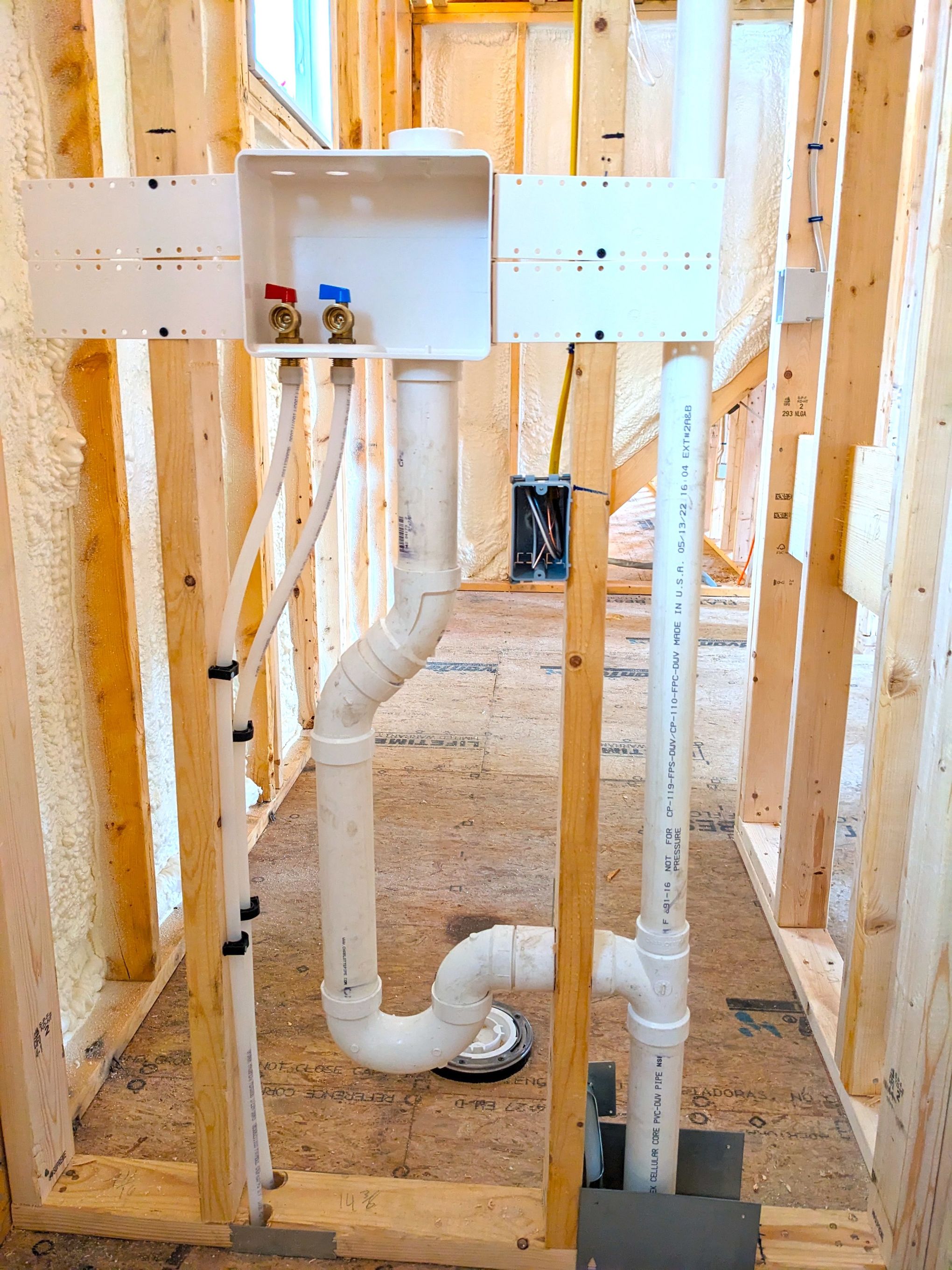We have encountered this article about Why Plumbing Air Vents Are Important below on the net and reckoned it made perfect sense to talk about it with you on this site.

Proper air flow in plumbing systems is commonly ignored, yet it is essential for preserving the functionality and security of your home's pipes. Ventilation assists regulate atmospheric pressure, protect against the accumulation of unsafe gases, and guarantee the efficient removal of waste. In this overview, we will certainly check out the importance of proper plumbing air flow, just how it works, and the advantages it gives your pipes system.
Understanding Ventilation in Plumbing
Air flow in pipes refers to the network of pipes that permit air to move via the water drainage system. These vents offer multiple purposes, consisting of regulating air pressure within the pipes, protecting against sewage system gases from going into the home, and aiding in the smooth circulation of wastewater.
How Air Flow Functions in Plumbing Solutions
Air Pressure Law
Correct ventilation keeps balanced atmospheric pressure within the plumbing system. When water streams through pipelines, it displaces air. Without appropriate air flow, this displacement can produce adverse pressure, causing reduce drains or siphoning of water from catches, which can trigger unpleasant smells to leak right into the home.
Protecting Against Drain Gas Build-up
Among the most crucial features of pipes vents is to stop sewage system gases, such as methane and hydrogen sulfide, from building up within the home. These gases can posture serious health and wellness risks and are extremely flammable. Vent pipes allow these gases to escape safely outdoors.
Helping in Waste Elimination
Ventilation assists in the efficient removal of wastewater by avoiding airlocks in the water drainage system. When air can flow easily through the vents, it allows water and waste to flow smoothly via the pipelines, reducing the risk of blockages and backups.
Sorts Of Plumbing Vents
Main Heap Vent
The major pile vent, also known as the vent stack, is the key vent in a pipes system. It expands from the primary drainpipe align via the roof, allowing gases to run away and fresh air to enter the system.
Branch Vent
Branch vents attach to the main pile vent and serve individual components, such as sinks, toilets, and showers. These vents make sure that each component has appropriate air flow to operate properly.
Air Admission Valve (AAV).
An Air Admission Valve (AAV) is a one-way shutoff that allows air to enter the pipes system without the need for a typical vent pipeline extending with the roofing. AAVs are frequently utilized in renovations or areas where setting up a common air vent is unwise.
Indications of Poor Air Flow in Pipes.
Slow Draining Fixtures.
If your sinks, bathtubs, or bathrooms are draining slowly, maybe an indicator of poor ventilation. Poor air circulation can create a vacuum effect, making it difficult for water to drain properly.
Gurgling Appears.
Gurgling audios coming from drains pipes are frequently a result of air being drawn through water catches because of negative stress in the pipes. This is a clear sign of insufficient air flow.
Undesirable Smells.
Drain odors inside your home are a warning that your plumbing system is not appropriately ventilated. This could mean that sewer gases are not being adequately vented outside, bring about potentially hazardous conditions.
Common Ventilation Mistakes.
Insufficient Vent Sizing.
Utilizing undersized vent pipelines can cause poor air flow and pressure inequalities in the system. It's essential to utilize vents that satisfy the particular needs of your pipes system.
Improper Vent Placement.
Positioning vents too far from the components they serve can reduce their effectiveness. Correct positioning makes sure that air can move easily and effectively with the system.
Disregarding Code Needs.
Building regulations offer details standards for pipes ventilation. Neglecting these codes can lead to a system that stops working to function properly and may lead to pricey repair work or carcinogen.
Benefits of Proper Ventilation.
Boosted System Performance.
Correctly ventilated plumbing systems run more effectively, with fewer blockages, faster draining pipes, and much less strain on the pipelines. This effectiveness expands the lifespan of the plumbing system.
Improved Air Quality.
By preventing drain gases from entering your home, appropriate ventilation contributes to much better indoor air top quality, making your living environment healthier and more comfortable.
Preventing Water Damage.
Adequate ventilation helps prevent water from being siphoned out of catches, which can lead to sewer gases getting in the home and creating water damages in time.
Actions to Ensure Correct Ventilation.
Consulting Pipes Codes.
Constantly speak with neighborhood plumbing codes when designing or customizing your plumbing system. These codes provide the essential guidelines for appropriate venting and guarantee your system meets safety standards.
Regular Inspection and Upkeep.
Routine evaluations can help identify possible ventilation problems before they come to be significant issues. Upkeep tasks, such as cleansing vent pipes and checking for clogs, are necessary for keeping the system in good working order.
Expert Setup.
For new installments or major adjustments, it's a good idea to hire a specialist plumbing technician. They have the experience to make sure the ventilation system is correctly created and installed according to code.
Final thought.
Appropriate air flow is a crucial component of any pipes system, making certain that it functions effectively and securely. By comprehending the importance of air flow, acknowledging the indicators of bad ventilation, and taking steps to keep your system, you can protect against costly issues and shield your home's air top quality.
4 Things You Should Know About Your Plumbing Vents
What Plumbing Vents Are
Also called a vent stack, a plumbing vent is a vertical pipe attached to your drain line that runs through your roof. The plumbing vent pipe, or plumbing air vent, removes gas and odors from your plumbing system and allows fresh air to enter the pipes, helping the water to flow out of the drain pipes.
What Plumbing Vents Do
Plumbing vents have two basic functions. One of which is to allow unpleasant smelling wastewater and sewer gasses to escape your plumbing system instead of entering your home. Plumbing vent pipes are typically located on roofs, away from windows, to ensure the fumes exit the home completely.
The other function of the plumbing vent is to move fresh air into your plumbing system. This helps move water through every plumbing fixture in your house, like toilets and sink drains. Think of the way in which you need to let a little air into the bottle as you pour soda in order to make the drink flow smoothly.
Different Types of Plumbing Vents
True vent: This is the most common vent option. In simplest terms, a true vent is a vertical pipe attached to your drain line that exits through the roof. They often function as the main vent that other fixtures can connect to. Re-vent pipe or auxiliary vent: Attached to the drain line near specific plumbing fixtures, re-vent pipes run up and over to connect to the main vent. Common vent: Two plumbing fixtures installed on opposite sides of a wall are typically tied into the vent stack using something known as a sanitary cross. Wet vent: This venting option operates as a drain pipe and a vent at the same time. Wet vent drainage systems drain water from one fixture while venting the air from another. Although they’ve been used for over 100 years, wet vent systems have only recently been added to the plumbing code in many areas. If you’re planning on installing one in a bathroom remodel, make sure you check your local code prior to construction. Loop vent: For free-standing fixtures like kitchen island sinks, loop vents are ideal. These vent pipes run under the floor, rise from the P-trap, and create a loop inside the cabinet sink. Air admittance valve: An AAV is a one-way mechanical valve typically installed at the site of the plumbing fixture. AAVs allow venting to occur without having to tie into a larger venting system. They’re ideal for venting fixtures where you aren’t able to easily connect to an existing vent system. Common Plumbing Vent Issues
Although vent pipes typically don’t have water flowing through them, they’re still subject to many typical plumbing issues. For example, clogs are one of the most common problems associated with sewer vent pipes. If your vent pipe gets clogged, all of your plumbing fixtures tied into the vent stack will be affected.
A sink with a slow drain that bubbles and gurgles or a strong sewage smell around your toilet are both indicators that your toilet vent pipe is clogged. Because most vent pipes exit through the roof, old leaves, twigs or even a bird’s nest could be clogging the pipe.
Clogs in your vent pipe system cause a buildup of negative pressure, meaning that water won’t be able to flow out of your home very well. It’s similar to putting your finger over the opening of a straw to trap water inside. When you remove your finger, the water is able to flow out of the straw.
If you suspect you have any blockage in your vent, make sure you have a professional come examine the situation. Left unchecked, a blocked air vent can lead to other costly repairs, like leaks and sediment buildup.
Under Pressure
Pipe vents are essential aspects of a home’s plumbing system. Owning a home means learning about all sorts of things you never put much thought into before. But by understanding as much as you can about the important systems of your home, you can keep those budgets intact and those anxiety levels low.
https://www.homeserve.com/en-us/blog/home-improvement/plumbing-vents/

I was shown that article about The Upsides of Proper Ventilation in Plumbing Design from a good friend on a different web blog. Are you aware of somebody else who is curious about the niche? Please feel free to promote it. Thanks so much for going through it.
Visit The Following Page